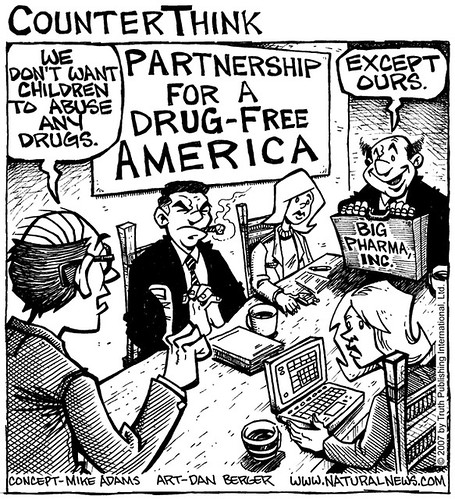The Waves of Drugs

Comic clip describing Big Pharma’s influence on the opioid epidemic. Image derived from DES Daughter.
May 2, 2022
According to the CDC, “from 1999-2019, nearly 500,000 people died from an overdose involving opioids, including prescription and illicit opioids.” In America, there have been three waves that devastated the US population: prescribed opioids, heroin, and fentanyl.
In the 1990s, Purdue Pharma played a major role in the start of the Opioid epidemic. They planted the seeds through their aggressive marketing of Oxycontin. By targeting non-cancer patients with chronic pain, OxyContin became a top-selling pain pill due to Dr. Richard Sackler’s role in the company’s marketing strategy. According to Michael Friedman (Sales and marketing executive), on a confidential memo, “Our current MS Contin business has created ‘a franchise’ with certain physicians who routinely write prescriptions for the drug may be the bridge that we can use to expand the use of OxyContin beyond Cancer patients to chronic non-malignant pain.” Their marketing strategy didn’t stop with that; the marketing team emphasized that the drug needed to be used for a broad group of pain patients, and they needed to demonstrate the twice-daily dosing of OxyContin for the best effect. Despite the possible concerns with abuse/addiction potential, they continued this massive push for OxyContin. They claimed no serious medical side effects were associated with the drug. Physicians trusted this and started to prescribe these medicines to their patients. Patients became addicted and began to misuse them by taking higher doses than prescribed. By the end of the 20th century, OxyContin became a real problem.
In the 2010s, a new substance took hold over the US, heroin. Due to a tighter control over the prescribing of opioids, opioid users started looking for other drugs that could maintain their addictive lifestyle. They turned to heroin, a cheaper, stronger, and more available opioid. According to a recent survey done by the National Institute on Drug Abuse, “almost all-94 percent-said they chose to use heroin because prescription opioids were ‘far more expensive and harder to obtain’.” Heroin is a rug derived from morphine, a semi-synthetic drug, which is used recreationally. Between 2002 and 2013, heroin related deaths increased 2086 percent due to its level of potency.
By 2015, drug overdose deaths continued to climb to over 30,000 deaths in just one year. Although opioid prescription rates were down, addicts found a new drug that was 100 times more potent than morphine, fentanyl. Fentanyl is mainly used for severe cancer pain and anesthesia because effects are felt almost instantaneously. Fentanyl is cheaper and easier to get than heroin. This is due to the fact that heroin has had a shortage. Many opioid users actually don’t like using fentanyl because it almost definitely would lead to an overdose. A lot of drug dealers and cartels lace their heroin with fentanyl to move their product, which ends up with more overdose death rates. Most of the time the users don’t know that fentanyl is laced in their heroin. Only two milligram dosage of fentanyl leads to an overdose. There have even been some cases where a person overdoses after a user has overdosed due to fentanyl’s potency.
Like limiting the amount of prescription opioids, there has been a real effort in the limiting of drug overdoses since 1999. For example, a prescription drug monitoring program is an “electronic database that tracks controlled substance prescriptions.” This electronic database has been able to identify patients, who have had a history of misusing prescription drugs and may have a risk of a drug overdose. Along with that, there have been many state laws used to reduce drug overdoses. For instance, there is the Menu of Prescription Drug Time and Dosage Limit Laws. This law shows the inventory of time and dosage limit laws on the prescription for dispensing of controlled substances. In hospitals, there are certain regulations that medical professionals must adhere to, in order to prescribe and give opioids to their patients. For one, there is the PDMP, and there are keys that nurses must have to lock up the substances before and after giving the opioids to their patients.
Despite all of the actions to stop this epidemic, opioids still has a major hold on the North American population. This will most likely continue to be a huge problem that doctors and lawmakers will fight against.
















